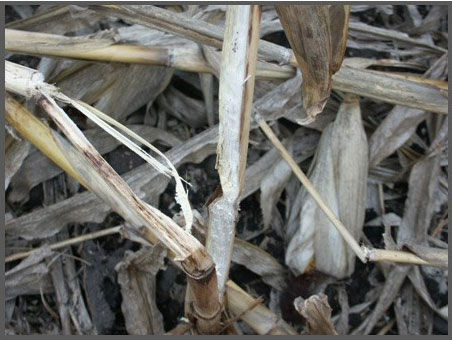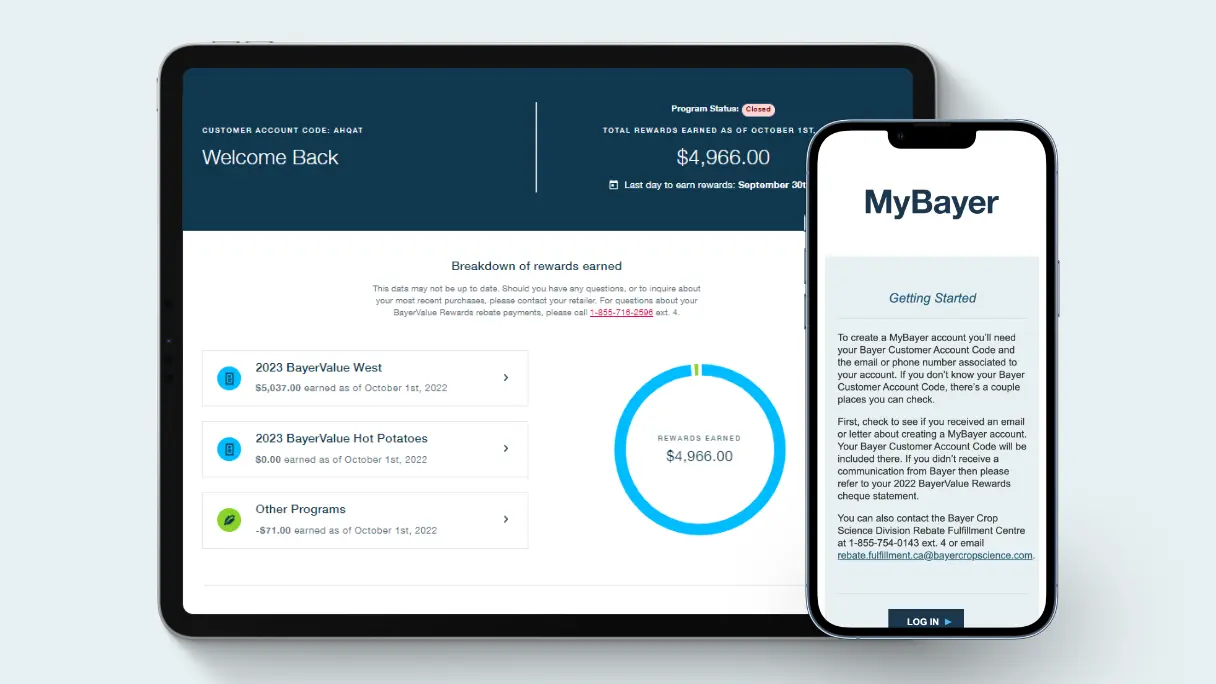2 READ-TIME
Benefits of a Timely Corn
March 30, 2020
A timely harvest is essential to help maximize potential grain yield and profitability.
Grain Moisture
Start monitoring grain moisture in late-September and consider starting to harvest at moisture levels higher than normal. Target a moisture level that can provide a good balance between minimizing harvest losses and keeping grain drying costs down. A plan to take advantage of the rapid drydown and allow everything to field dry could be a VERY costly mistake. Harvesting at lower moistures can increase mechanical losses due to ear drop, stalk lodging, and kernel shattering.
Start monitoring corn as soon as physiological maturity (black layer) is reached. When maturity is reached during warm weather, grain moisture at black layer is usually lower. With high temperatures, it is extremely easy to underestimate the grain drying rates! Grain that matures in late September can have an average daily drydown rate as low as 0.3 or greater than 1 percentage point per day, depending on drying conditions1. As corn reaches maturity at the end of September, it is possible to lose 10 moisture percentage points during the month of October6. Temperature, humidity, weather, and grain maturity influence grain dry rates1. To test for grain moisture, randomly select 10 ears of corn and remove several rows of corn kernels from the full length of the ear. Mix the grain thoroughly. Use an accurate moisture meter to determine the moisture content. Take three moisture readings and average the results.
Harvesting Tips
In addition to harvesting at an optimum grain moisture content, achieving proper combine settings can help increase combine efficiency, maximize grain quality, and minimize field losses. Listed below are a few combine preparation tips. Always follow the manufacturer’s equipment setting recommendations.
- To minimize kernel damage, the lowest recommended cylinder speed should be used to start. Only enough speed to adequately thresh the grain should be used while keeping losses to acceptable levels.
- Cleaning airflow can be set at a higher level, and then reduced just below the point where the grain is blown out the rear of the cleaning shoe.
- Header speed should be in check with ground speed for improved stalk flow.
- Deck plated/snapping rolls should be adjusted to match the size of ear and stalks. This can help avoid shelling on the ear and slipping through the front of the machine.
- Spacing between plates should be 3 cm (1.25 inches) in a normal crop and ear savers should be maintained on the corn header3.
Fields with considerable lodging should be harvested early to help minimize the risk of increased lodging and ear rots. Here are some harvesting tips to protect yield potential in fields with lodging:
- Consider using a corn reel if needed.
- Harvesting against the angle of the down corn can help maximize lift into the header.
- Time should be taken to make combine adjustments in the field.
- Combine should be properly adjusted to minimize broken kernels and excess fines as they can lead to lower grades.
- Over-threshing should be avoided.
- Combines should be set to maximize the blow out of fines and foreign material.
- Consult the combine operator’s manual for cylinder adjustments, speed and clearance settings suggested by the manufacturer.
Storage Tips
Stored corn should be checked frequently. Bins should be inspected every 1 to 2 weeks in the fall and spring and once every 2 to 4 weeks after conditions in the bin have stabilized during the winter months4.
- Adjust combine to minimize kernel damage and maximize cleaning.
- Dry corn to 13 to 14% moisture prior to storage.
- Store grain at cool temperatures 0 to -6 °C5.
- Check grain periodically for temperature, hot spots, wet spots, and insects.
- Consider applying antifungal treatments to grain.

Physiological stalk lodging.
Sources
1 Elmore, R. and L. Abendroth. 2010. Impact of in-field drydown rates on corn harvest. Iowa State University. www.extension.iastate.edu (verified 8/30/2011). 2 OMAFRA staff, Corn: stalk rots. Pub. 811, Agronomy Guide, 01 March 2002. 3 Hanna, M. 2008. Combine harvesting tips for 2008 harvest. Department of Agriculture and Biosystems Engineering. Iowa State University Extension. 4McNeill, S. and M. Montross. Corn Harvesting, Handling, Drying, and Storage. www.ca.uky.edu (verified 8/20/2010). 5 Quesnel, G. 1999. Aerating stored grain for winter storage. OMAFRA Update 3. www.agrinewsinteractive.com (verified 8/30/2011). 6 Rankin, M. 1993. Corn dry down rates in late fall and winter. University of Wisconsin Extension. www.uwex.edu (verified 9/4/2011). Thomison, P. 2010. Corn harvest schedules and dry down rates. C.O.R.N Newsletter. The Ohio State University. http://corn.osu.edu (verified 8/28/2011). Nielsen, R. 2008. Stress during grain fill: A harbinger of stalk health problems. Purdue University. www.kingcorn.org (verified 8/20/2010). Nielsen, R. 2009. Field drydown of mature corn grain. Purdue University. www.kingcorn.org (verified 8/20/2010). Nafziger, E. 2010 Corn to the finish line: Racing or Collapsing? University of Illinois. http://bulletin.ipm.illinois.edu (verified 8/20/2010) .
